Colonel
Colonel (/ˈkɜːrnəl/; abbreviated Col., Col or COL and alternatively spelled coronel) is a senior military officer rank below the general officer ranks. However, in some small military forces, such as those of Monaco or the Vatican, colonel is the highest rank. It is also used in some police forces and paramilitary organizations.
Historically, in the seventeenth, eighteenth and nineteenth centuries, a colonel was typically in charge of a regiment in an army. Modern usage varies greatly, and in some cases, the term is used as an honorific title that may have no direct relationship to military service. The rank of colonel is typically above the rank of lieutenant colonel. The rank above colonel is typically called brigadier, brigade general or brigadier general.
Equivalent naval ranks may be called captain or ship-of-the-line captain. In the Commonwealth air force rank system, the equivalent rank is group captain.
History and origins
The word "colonel" derives from the same root as the word "column" (Italian: colonna) and means "of a column", and, by implication, "commander of a column". The word "colonel" is therefore linked to the word "column" in a similar way that "brigadier" is linked to "brigade", although in English this relationship is not immediately obvious. By the end of the late medieval period, a group of "companies" was referred to as a "column" of an army.
Since the word is believed to derive from sixteenth-century Italian, it was presumably first used by Italian city states in that century. The first use of colonel as a rank in a national army was in the French "National Legions" (Légions nationales) created by King Francis I by his decree of 1534. Building on the military reforms of Louis XII's decree of 1509, he modernized the organization of the French royal army. Each colonel commanded a legion with a theoretical strength of six thousand men.
With the shift from primarily mercenary to primarily national armies in the course of the seventeenth century, a colonel (normally a member of the aristocracy) became a holder (German Inhaber) or proprietor of a military contract with a sovereign. The colonel purchased the regimental contract — the right to hold the regiment — from the previous holder of that right or directly from the sovereign when a new regiment was formed or an incumbent was killed.
The Spanish equivalent rank of coronel was used by the Spanish tercios in the 16th and 17th centuries. Gonzalo Fernández de Córdoba, nicknamed 'the Great Captain', divided his armies in 'coronelías' or colonelcies, each led by a coronel (colonel).[1] However, the Spanish word probably derives from a different origin, in that it appears to designate an officer of the crown (corona, thus the rank coronel), rather than an officer of the column (columna, which would give the word columnal). This makes the Spanish word coronel probably cognate with the English word "coroner".
As the office of colonel became an established practice, the colonel became the senior captain in a group of companies that were all sworn to observe his personal authority — to be ruled or regimented by him. This regiment, or governance, was to some extent embodied in a contract and set of written rules, also referred to as the colonel's regiment or standing regulation(s). By extension, the group of companies subject to a colonel's regiment (in the foregoing sense) came to be referred to as his regiment (in the modern sense) as well.
In French usage of this period, the senior colonel in the army or, in a field force, the senior military contractor, was the colonel general and, in the absence of the sovereign or his designate, the colonel general might serve as the commander of a force. The position, however, was primarily contractual and it became progressively more of a functionless sinecure. (The head of a single regiment or demi-brigade would be called a 'mestre de camp' or, after the Revolution, a 'chef de brigade'.)
By the late 19th century, colonel was a professional military rank though still held typically by an officer in command of a regiment or equivalent unit. Along with other ranks, it has become progressively more a matter of ranked duties, qualifications and experience and of corresponding titles and pay scale than of functional office in a particular organization.
As European military influence expanded throughout the world, the rank of colonel became adopted by nearly every nation (albeit under a variety of names).
With the rise of communism, some of the large communist militaries saw fit to expand the colonel rank into several grades, resulting in the unique senior colonel rank, which was found and is still used in such nations as China and North Korea.
Colonel-in-chief
In many modern armies, the 'regiment' has more importance as a ceremonial unit or a focus of members' loyalty than as an actual battle formation. Troops tend to be deployed in 'battalions' (commanded by a lieutenant colonel) as a more convenient size of military unit and, as such, colonels have tended to have a higher profile in specialist and command roles than as actual commanders of regiments. However, in Commonwealth armies, the position of the colonel as the figurehead of a regiment is maintained in the honorary role of "colonel-in-chief", usually held by a member of the royal family,[2] the nobility, or a retired senior military officer. The colonel-in-chief wears a colonel's uniform and encourages the members of the regiment, but takes no active part in the actual command structure or in any operational duties.[3]
Colonel of the Regiment
The title Colonel of the Regiment (to distinguish it from the military rank of colonel) continues to be used in the modern British Army. The ceremonial position is often conferred on retired general officers, brigadiers or colonels who have a close link to a particular regiment. Non-military personnel, usually for positions within the Army Reserve may also be appointed to the ceremonial position. When attending functions as "Colonel of the Regiment", the titleholder wears the regimental uniform with rank insignia of (full) colonel, regardless of their official rank. A member of the Royal Family is known as a Royal Colonel. A Colonel of the Regiment is expected to work closely with a regiment and its Regimental Association.
Colonel and equivalent ranks by country
Colonel in individual military forces
The following articles deal with the rank of colonel as it is used in various national militaries.
North and South American equivalent ranks
- Colonel (Canada)
- Colonel (United States)
- Coronel (Brazil and Hispanic America)
European equivalent ranks
- Colonel or Kolonel (Albania, Armenia: Gndapet (գնդապետ), Belgium, France, Estonia, Moldova, Netherlands, Romania, Switzerland, United Kingdom)
- Colonnello (Italy and Switzerland)
- Kurunell (Malta)
- Coirnéal (Ireland)
- Coronel (Portugal and Spain)
- Eversti or Överste (Finland and Sweden)
- Oberst (Austria, Denmark, Germany, Norway and Switzerland)
- Ofursti (Iceland)
- Ezredes (Hungary – literally means "leader of a thousand" (i.e. of a regiment))
- Syntagmatarchis (Συνταγματάρχης) (Greece).
Since the 16th century, the rank of regimental commander was adopted by several Central and Eastern European armies, most notably the forces of Polish–Lithuanian Commonwealth, Cossacks and then Muscovy. In countries with Slavic and Baltic languages, the exact name of the rank maintains a variety of spellings, all descendant from the Old Slavonic word plk or polk meaning unit of standing army (see The Tale of Igor's Campaign), and include the following:
- Plukovník: Czech Republic and Slovakia
- Polkovnik, Polkovnyk or Palkounik: Belarus, Bulgaria, Russia, Slovenia, North Macedonia and Ukraine
- Pukovnik: Bosnia and Herzegovina, Croatia and Serbia
- Pulkvedis: Latvia
- Pulkininkas: Lithuania
- Pułkownik: Poland
Other countries have adopted the rank and spelling when they became part of the Russian Empire and later Soviet Union including following:
- პოლკოვნიკი (Polkovniki) Georgia.
Arab ranks
There are two common Arab ranks relevant to the English word "colonel":
- The Arabic word for "colonel" is عميد (ʿamīd) which comes from the same triconsonantal root as عمود (ʿamūd) meaning "column". Both words come from the root ʿ-m-d, column in the sense of "pillar" (عَمَد). This relationship is comparable to that "colonel" and "column" are cognates with Latin columna as common ancestor. In terms of equivalence, the Arabic colonel, ʿamīd, is conventionally considered to be equivalent to the Commonwealth rank of brigadier.
- It is the rank of عقيد (ʿaqīd), which is conventionally considered equivalent to the Commonwealth rank of colonel. The word ʿaqīd is linked to عقد (ʿaqad), meaning a contract, covenant or pact. In its original literal meaning, ʿaqīd means a man who has entered into a contract, pact or covenant.
In addition, a non-Arab colonel is often referred to as "kūlūnīl" (كولونيل). In the Ottoman Empire, the Ottoman ranks miralay and qaimaqam were formerly used instead of the current Arab ranks ʿamīd and ʿaqīd.
Asian equivalent ranks
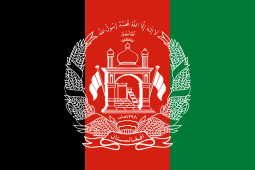

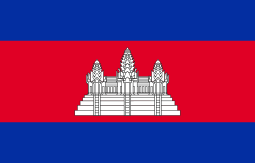





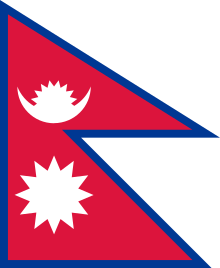
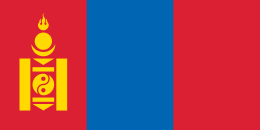
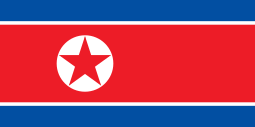


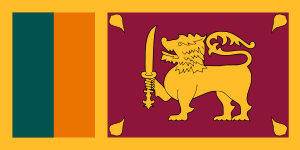


- Phan Ek (TH: พันเอก) First of 1,000: Colonel
- Phan Tho (TH: พันโท) Second of 1,000: Lieutenant colonel


Turkish and Ottoman ranks
The Ottomans used a rank of "column chief", which was "kol ağa", from kol (column in Turkish) and ağa (chief in Turkish). However, in authority, this was more equivalent to a European major. The Ottoman army rank of "lieutenant governor" (kaymakam) was equivalent in authority to a European colonel. Kol ağa is no longer used.
The word for a regiment, alay, can also mean a procession, or be loosely translated as a column of men. Alay was in the Ottoman army rank miralay ("regimental emir") and the Ottoman gendarmerie rank alaybeyi ("regimental bey"). These Ottoman ranks were equivalent to European brigade commanders.
The modern Turkish Army uses the rank of albay as its colonel rank (NATO rank OF-5). This is a contraction of the older Turkish word alaybeyi.
African equivalent ranks
- Colonel (
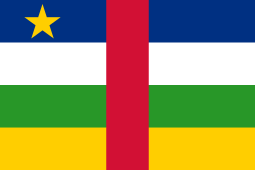



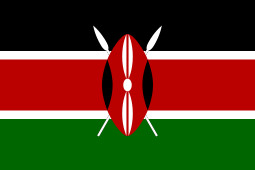
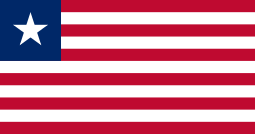


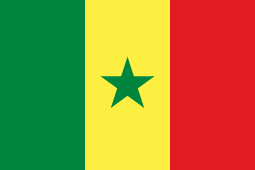

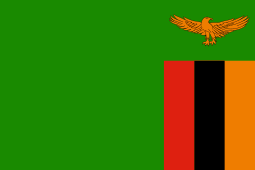
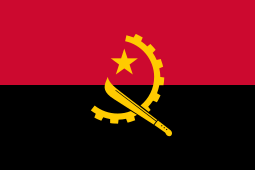
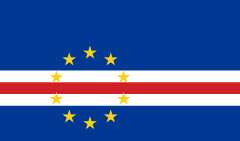

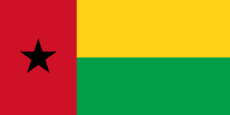
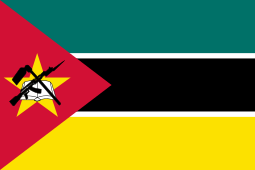

- Aqid (عقيد) (
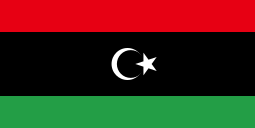



Insignia
Insignia of Army colonels
.svg.png)
Afghanistan
(Dagarwal)
Albania
(Kolonel)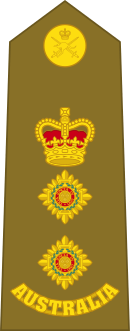



Bosnia and Herzegovina
(Pukovnik)
Brazil
(Coronel)
Bulgaria
(полковник)-2014.svg.png)
Canada
(Colonel)
Chile
(Coronel)
China
(Shang Xiao, 上校)
Colombia
(Coronel)

Denmark
(Oberst)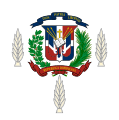

Finland
(Eversti)

Georgia
(პოლკოვნიკი, Polkovnik)


Hungary
(Ezredes)




.svg.png)
Italy
(Colonnello)
Monaco
(Colonel)
Netherlands
(Kolonel)
North Macedonia
(полковник, polkovnik)
Norway
(Oberst)


Portugal
(Coronel)

Serbia
(Pukovnik)
Spain
(Coronel)

Syria
(Arabic: عقيد)
Soviet Union
(Polkovnik / Полковник)


Taiwan
(Shang Xiao).svg.png)




United States 
United States
(April 1861 to May 1865)
United States
(September 1959 to October 2015)

Mongolia
(Хурандаа)
Insignia of Air Force colonels

Belgium 
Brazil (Coronel) 

Chile (Coronel) 
Denmark (Oberst) 
France 
Georgia (პოლკოვნიკი, Polkovnik) 
Germany (Oberst)  Indonesia (Kolonel)
Indonesia (Kolonel)
Iran (Sarhang, سرهنگ) 
Israel (Aluf Mishne) 
Italy (Colonnello) 
Netherlands (Kolonel) 
Poland (Pułkownik) 
Portugal (Coronel) 
Spain (Coronel) 
Sweden (Överste) 
United States 
United States 
Vietnam (Thượng tá) 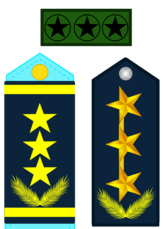
Insignia of Naval infantry colonels

Brazil (Capitão de Mar e Guerra)  Indonesian Marine
Indonesian Marine
Israel 
United Kingdom 
United States 
United States
Colonel as highest-ranking officer
Some military forces have a colonel as their highest-ranking officer, with no 'general' ranks, and no superior authority (except, perhaps, the head of state as a titular commander-in-chief) other than the respective national government. Examples include the following (arranged alphabetically by country name):
- Antigua and Barbuda (170 personnel)
- Costa Rica (about 8,000 personnel)
- Iceland (100 personnel, employed only for peacekeeping duties)
- Libya (commands all the Armed Forces – Muammar Gaddafi until 2011)
- Monaco (two branches, with a total of about 250 personnel)
- Suriname (1,800 personnel) (up to 19 June 2020)[4]
- Vatican City State (110 personnel – the Swiss Guard)
| Rank insignia for a colonel in several nations which have no higher military rank | |||||
|---|---|---|---|---|---|
| Colonel CCP | Colonel CSP | ||||
 | |||||
Other uses of colonel ranks
The term colonel is also used as a title for auctioneers in the United States; there are a variety of theories or folk etymologies to explain the use of the term.[5] One of these is the claim that during the American Civil War goods seized by armies were sold at auction by the colonel of the division.[6]
Kentucky colonel is the highest title of honor bestowed by the Commonwealth of Kentucky. Commissions for Kentucky colonels are given by the Governor and the Secretary of State to individuals in recognition of noteworthy accomplishments and outstanding service to a community, state or the nation. The sitting governor of the Commonwealth of Kentucky bestows the honor of a colonel's Commission, by issuance of letters patent. Perhaps the best known Kentucky colonel is Harland Sanders of Kentucky Fried Chicken fame.
The rank of colonel is also used by some military police forces such as Military Police (Brazil), the Carabineros de Chile and the French National Gendarmerie. The Police of Russia, being a paramilitary organization, also uses this rank.
- Brazil (Coronel)
 Chile (Coronel)
Chile (Coronel) French Nationale Gendarmerie (Colonel)
French Nationale Gendarmerie (Colonel) Russian MVD Police (Polkovnik)
Russian MVD Police (Polkovnik)
See also
References
Notes
- Los tercios españoles. La batalla de Pavía at militar.org.ua (in Spanish, unspecified authorship)
- See this list of colonel-in-chief appointments held by The Prince of Wales.
- A webpage by a Scottish regiment concerning their colonel-in-chief. Archived 2007-12-19 at the Wayback Machine
- "Minister Benschop bevorderd tot Generaal-Majoor". Suriname.nu (in Dutch). Retrieved 14 July 2020.
- Leab, Daniel J.; Leab, Katharine Kyes (29 December 1981). "The auction companion". Harper & Row – via Google Books.
- Doyle, Robert A.; Baska, Steve (November 2002), "History of Auctions: From ancient Rome to todays high-tech auctions", Auctioneer, archived from the original on May 17, 2008, retrieved 2008-06-22
Bibliography
- Keegan, John; & Wheatcroft, Andrew (1996). Who's Who in Military History: From 1453 to the Present Day. London: Routledge.